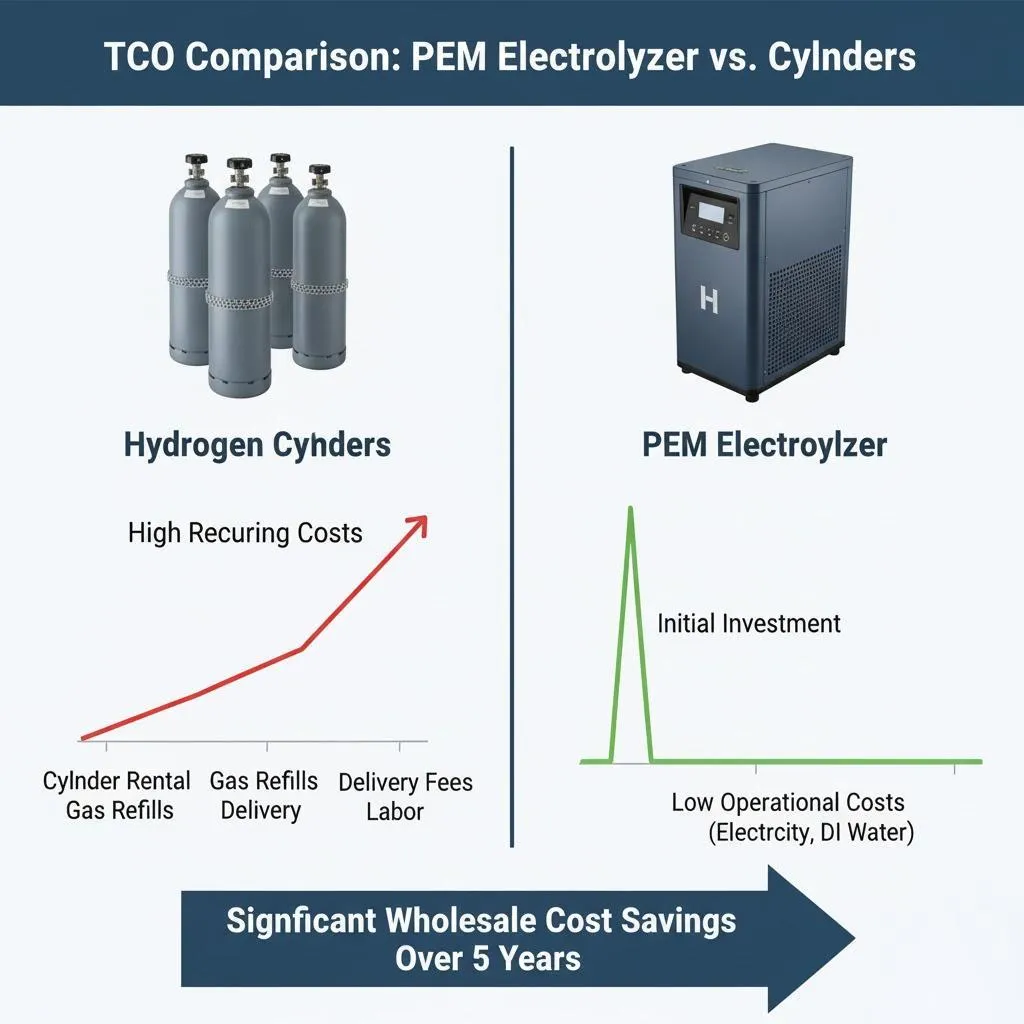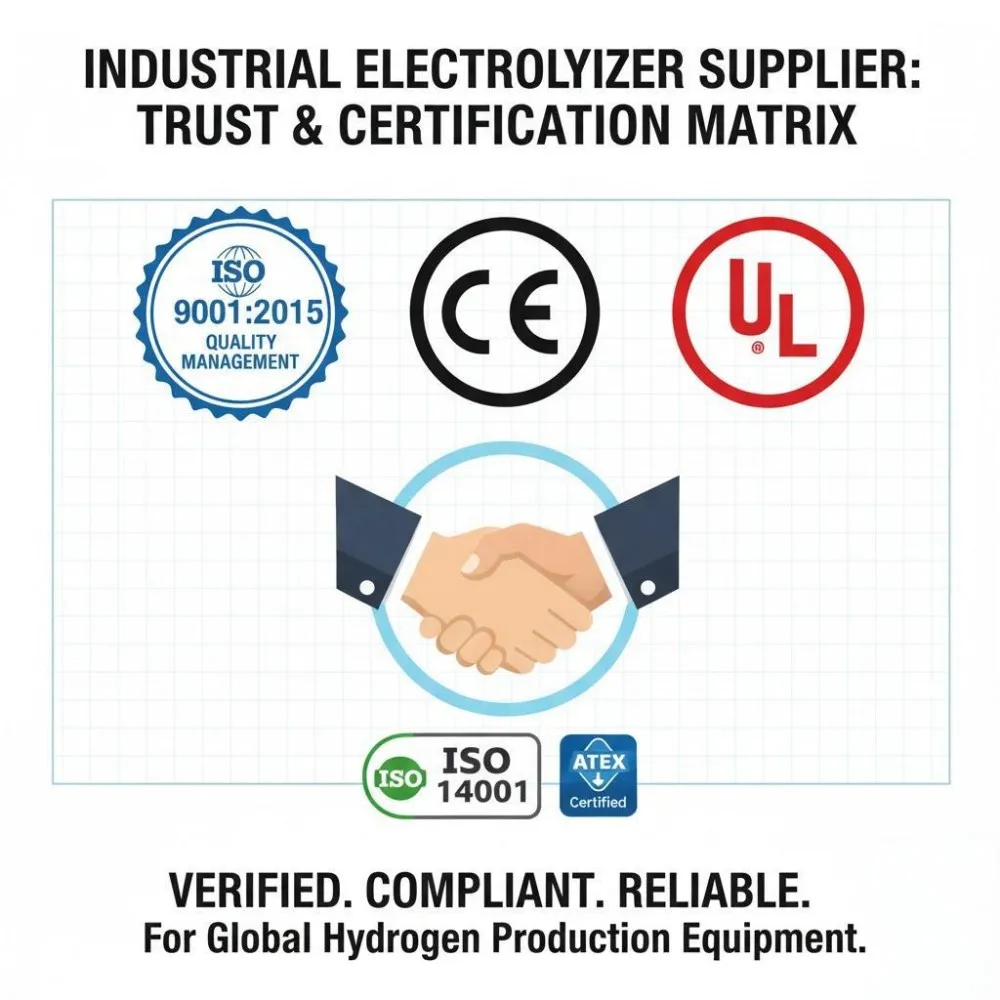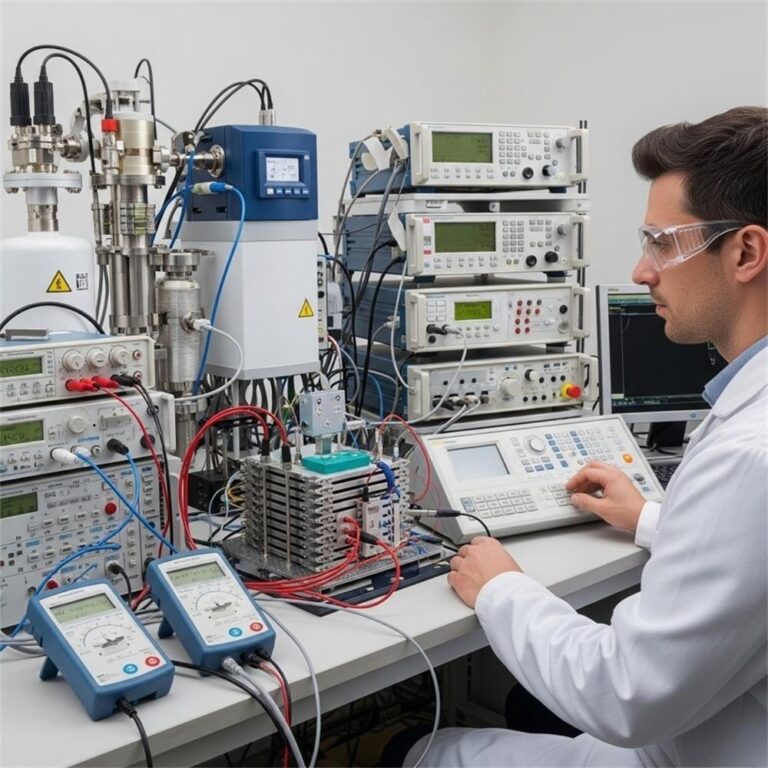I. Introduction: The Rise of Large-Scale Hydrogen Production
As the world transitions to a cleaner energy future, hydrogen has emerged as a pivotal solution in decarbonizing industrial processes, transport systems, and power generation. Recognized for its versatility and clean-burning properties, hydrogen is increasingly being adopted as an alternative to fossil fuels across sectors.
With global commitments to reduce carbon emissions, the need for scalable hydrogen production systems has never been greater. Large-scale hydrogen generation is especially critical for sectors like refining, steel, chemicals, and electronics, where hydrogen acts as both a fuel and a feedstock.
One of the most promising methods for producing green hydrogen is electrolysis—the process of using electricity to split water into hydrogen and oxygen. When powered by renewable energy, this method is completely carbon-free. This article focuses on the 150Nm3/h hydrogen generator, a capacity designed to meet the demands of medium to large-scale industrial operations. We’ll explore its components, applications, technical metrics, and financial aspects to help procurement professionals make informed decisions.
II. Industrial Applications for Large-Scale Hydrogen (Produced via Electrolysis)
A. Refining
Hydrogen is vital in petroleum refining, particularly for hydrodesulfurization and hydrocracking. Traditional sources like steam methane reforming (SMR) come with significant CO₂ emissions. A 150Nm3/h hydrogen generator powered by clean energy enables on-site, zero-emission hydrogen production—offering operational flexibility and reduced dependency on external supply chains.
B. Chemical Industry
1. Ammonia Production
Hydrogen is a key reactant in the Haber-Bosch process, used to synthesize ammonia—a primary input in fertilizers. Using electrolytic hydrogen can drastically reduce the carbon footprint of this energy-intensive process.
2. Methanol Production
Methanol synthesis also requires large volumes of hydrogen. Electrolytic hydrogen ensures cleaner output and aligns with ESG goals, especially in regions introducing green fuel mandates.
C. Steel Manufacturing
The steel industry is a significant emitter of greenhouse gases. With the shift towards Direct Reduced Iron (DRI) technology, hydrogen is replacing carbon-intensive coke. A 150Nm3/h electrolyzer can feed hydrogen into this process, slashing CO₂ emissions substantially.
D. Electronics Industry
Semiconductor manufacturing demands ultra-pure hydrogen for chemical vapor deposition (CVD) and annealing. Electrolytic hydrogen, with purity levels reaching 99.999%, meets these stringent requirements and ensures uninterrupted production cycles.
E. Power Generation
1. Hydrogen as a Fuel
In gas turbines, hydrogen can be co-fired or used as a primary fuel. This makes it suitable for hybrid renewable power plants aiming for 24/7 clean energy supply.
2. Fuel Cells
Hydrogen is the cornerstone of proton exchange membrane (PEM) and solid oxide fuel cells. Large-scale electrolysis systems support backup power, microgrids, and off-grid applications.
F. Emerging Applications
Synthetic fuels and e-fuels—created by combining hydrogen with captured CO₂—offer a carbon-neutral alternative to fossil fuels for aviation, shipping, and heavy transport. Electrolysis-based hydrogen is key to unlocking this potential.
III. Electrolysis Technology at Scale: Understanding 150Nm3/h Hydrogen Generators
A. Overview of Electrolysis
Electrolysis splits water (H₂O) into hydrogen (H₂) and oxygen (O₂) using electrical energy. This process occurs in an electrolyzer, where electrodes submerged in a water-based electrolyte facilitate the reaction.
B. Types of Electrolysis Technologies
1. PEM Electrolysis
- Pros: High efficiency, fast start-up times, and compatibility with fluctuating renewable power.
- Cons: Higher capital costs due to expensive catalyst materials like platinum and iridium.
- Ideal for: Industries requiring flexible and high-purity hydrogen.
2. Alkaline Electrolysis
- Pros: Lower cost, mature technology, and robust design.
- Cons: Slower dynamic response and slightly lower efficiency.
- Ideal for: Continuous hydrogen production in stable operating conditions.
3. Solid Oxide Electrolysis (SOEC)
- Operates at high temperatures (700–1000°C) for superior efficiency.
- Still in R&D or pilot phase but promising for integration with industrial heat sources.
C. Scaling Up: The 150Nm3/h Capacity
Producing 150Nm3 of hydrogen per hour equals about 13.5 kg/h, suitable for:
- Mid-sized chemical plants
- Renewable energy storage systems
- Distributed hydrogen fueling stations
This capacity balances performance with economic feasibility for industrial-scale operations.
D. System Design Considerations
Key factors include:
- Footprint: Adequate space for electrolyzer, power electronics, and gas processing units.
- Power Supply: A stable grid connection or renewable energy source like solar or wind.
- Safety: Proper ventilation, hydrogen leak detection, and automatic shutdown systems.
IV. Key System Components of a 150Nm3/h Hydrogen Generator
A. Electrolyzer Stack
This is the heart of the system. Stacks are made of multiple cells connected in series. Key materials:
- Membranes: Nafion for PEM, asbestos-free diaphragms for alkaline.
- Electrodes: Typically coated with noble metals or nickel-based catalysts.
B. Power Supply and Control System
Includes:
- Rectifiers and inverters for DC conversion.
- PLC-based control panels with SCADA integration for remote monitoring.
- Safety interlocks and alarms.
C. Water Purification System
Raw water is purified through:
- Pre-filtration: Removes large particulates.
- Reverse Osmosis: Filters out dissolved salts.
- Deionization: Final polish to achieve ultrapure water (<1 µS/cm conductivity).
D. Gas Separation and Drying System
- Hydrogen is separated from oxygen using membrane or PSA systems.
- Dryers (desiccant or refrigerated) ensure purity >99.999%.
E. Compression and Storage (Optional)
Compression enables hydrogen to be stored in:
- High-pressure tanks (200–700 bar)
- Underground caverns for grid-scale storage
- Tube trailers for transportation
F. Safety Systems
Includes:
- Flameproof enclosures
- Hydrogen leak sensors
- Emergency shutdown valves
- Vent stacks
V. Efficiency Metrics for 150Nm3/h Hydrogen Generators
A. Energy Consumption (kWh/Nm3 H₂)
One of the most important performance indicators, energy consumption typically ranges from 4.5 to 5.5 kWh per Nm³ of hydrogen depending on the electrolysis technology:
- PEM Electrolyzers: ~4.8 kWh/Nm³
- Alkaline Electrolyzers: ~5.2 kWh/Nm³
Minimizing this value is critical for reducing operating expenses and achieving low-carbon credentials.
B. Current Density
Current density affects both hydrogen output and stack lifetime. High current densities enable greater output but may reduce the lifespan of stack components. Optimal current density is usually 1–2 A/cm² for PEM systems and slightly lower for alkaline systems.
C. Hydrogen Purity
Applications in semiconductors, fuel cells, and pharmaceuticals often require 99.999% purity (5N). This is achieved through integrated purification systems such as:
- Palladium membrane separators
- Pressure swing adsorption (PSA)
- Cryogenic purification
D. System Availability and Reliability
Industrial buyers prioritize uptime. Modern 150Nm3/h generators often deliver >98% availability with predictive maintenance and redundant safety systems. Lifespans typically range from 60,000 to 80,000 operating hours for electrolyzer stacks.
E. Cold Start-up Time
PEM systems offer fast start-up times (within minutes), making them suitable for dynamic operations. Alkaline systems require 30–60 minutes, suitable for steady-state processes.
VI. Economic Analysis of Large-Scale Hydrogen Production with 150Nm3/h Electrolysis Systems
A. Capital Expenditure (CAPEX)
Initial investment includes:
- Electrolyzer unit and accessories
- Power conditioning systems
- Water purification and gas drying modules
- Storage/compression infrastructure
A typical PEM system at this capacity may cost $1.5M–$2.5M USD, depending on integration complexity, regional costs, and automation features.
B. Operating Expenses (OPEX)
Key operational costs:
- Electricity: Most significant component; at $0.05/kWh, electricity for a 150Nm3/h system can cost ~$36/hour.
- Water: Deionized water cost is relatively low.
- Maintenance and Labor: Ranges from 2–5% of CAPEX annually.
C. Levelized Cost of Hydrogen (LCOH)
LCOH is a consolidated figure including CAPEX, OPEX, and system lifetime. For a 150Nm3/h unit:
- At $0.05/kWh, LCOH ≈ $4–$6/kg
- With renewable PPAs or government subsidies, LCOH can fall below $3/kg
D. Government Incentives and Subsidies
Several regions offer grants, tax breaks, and credits for clean hydrogen:
- U.S.: Inflation Reduction Act includes up to $3/kg hydrogen tax credit
- EU: Green Hydrogen Auctions and Horizon Europe funding
- Asia-Pacific: China and Japan offer capital subsidies for electrolyzers and R&D funding
E. Return on Investment (ROI)
For industries replacing SMR hydrogen or decarbonizing processes, ROI can be achieved within 5–8 years, especially when leveraging subsidies or reducing carbon pricing exposure.
F. Comparison to Other Hydrogen Production Methods
| Technology | CO₂ Emissions | LCOH | Maturity |
|---|---|---|---|
| SMR | High | $1.50–$2 | Commercial |
| SMR + CCS | Medium | $2.50–$3.5 | Emerging |
| Electrolysis | Zero (if RE) | $3–$6 | Growing |
Electrolysis, while costlier today, offers future-proofing against carbon regulations and volatile gas prices.
VII. Case Studies and Success Stories
A. Green Steel Pilot – Europe
A European steelmaker integrated a 150Nm3/h PEM electrolyzer into their DRI line. Result:
- 23% reduction in Scope 1 emissions
- ROI expected in 6.5 years with EU Green Deal support
- Real-time integration with wind power
B. Semiconductor Plant – Southeast Asia
An electronics firm adopted a 150Nm3/h alkaline electrolyzer for ultra-pure hydrogen:
- Reduced gas import costs by 40%
- Enhanced production uptime
- Passed all ISO cleanroom gas standards
VIII. Frequently Asked Questions (FAQs)
1. What does 150Nm3/h hydrogen production mean?
It refers to producing 150 normal cubic meters of hydrogen per hour, equivalent to about 13.5 kilograms of hydrogen.
2. What is the difference between PEM and alkaline electrolyzers?
PEM offers faster response and higher purity but at a higher cost; alkaline is more affordable and suited for continuous processes.
3. How much energy does a 150Nm3/h electrolyzer consume?
Typically, 675–825 kWh per hour, depending on system efficiency.
4. Is this technology safe to use near populated areas?
Yes, with modern leak detection, automatic shutoffs, and ventilation systems, hydrogen production is safe and widely regulated.
5. Can the hydrogen be stored on-site?
Yes, compressed gas storage (200–700 bar) or metal hydride systems are commonly used.
6. What industries benefit most from this capacity?
Chemical plants, steel producers, refineries, and electronics manufacturers benefit significantly from on-site hydrogen production at this scale.
IX. Conclusion: The Future of Large-Scale Hydrogen Production with Electrolysis
As industries seek to decarbonize and improve operational resilience, the 150Nm3/h hydrogen generator offers a robust, scalable, and eco-friendly solution. Through advanced electrolysis, companies can:
- Eliminate carbon emissions tied to traditional hydrogen production
- Ensure consistent supply in mission-critical operations
- Qualify for green financing and incentives
Electrolytic hydrogen is not just a trend—it’s the new industrial standard. Forward-thinking organizations that adopt this technology now will be better positioned for future sustainability mandates and economic advantages.
👉 Ready to power your operations with green hydrogen? Visit HeLeTitaniumHydrogen.com to learn more or request a customized quote today.







